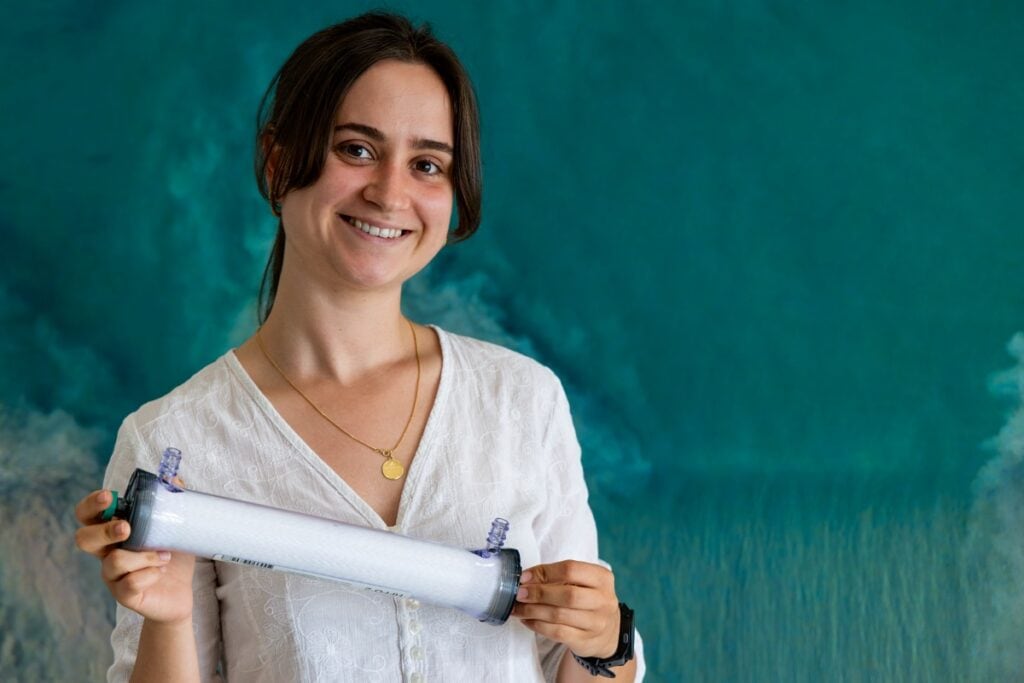Spacemail: Our system has returned

For months and months, the many employees of Aquaporin have been following Andreas Mogensen on the Huginn mission – for most, it is out of pure interest, but for others, it is to closely follow his work on the many experiments he is conducting.
At Aquaporin, four employees have been monitoring his every move a bit closer. We call them ‘Aquanauts’, but in reality, they are the people who have worked closely on Aquaporin’s Aquamembrane-3 project, which aims to provide a smaller, more efficient, and easy-to-use filtration system that allows astronauts to reuse condensation, urine, and sweat by turning it into clean drinking water.
In January, a carefully packaged box arrived at Aquaporin’s headquarters. The Aquanauts were oozing with excitement, and when they opened the package, you could understand why: The Aquamembrane-3 system had returned from space.
Months of patiently waiting for the system became a hyper-focused work task. Andreas Mogensen might be done with the testing, but for our Aquanauts – this is where their work continues.
Now, the samples and the system will be tested in great detail, as we can finally examine at what level the technology works in microgravity.
Jörg Vogel, VP of Open Innovation at Aquaporin, has been in an ongoing dialogue with the European Space Agency about the project, and he is thrilled about the work coming up.
“The preparations and actual testing in space have been exciting but now is where it really gets interesting. We have a lot of data to go through now. It is the culmination of a lot of work for us, but in reality, now is when we get actual feedback on the performance of our system. That is what I am most excited about.”
Jörg Vogel, VP Open Innovation
From development to examination
Developing a system for space missions requires a lot of time and know-how. Karolina Jastrembska, Project Specialist at Aquaporin, has been part of the space project, and countless hours have gone into development, testing, and troubleshooting before the system was even heading into orbit.
“We have worked on developing this system for years, and to have it back at the office is incredible. On the footage from space, we managed to see the system working after overcoming the acceleration of the spacecraft and exposure to microgravity on the ISS, and now we have the samples that we can analyze and use to support our scientific hypotheses.”
Karolina Jastrembska, Project Specialist
Being the second time Aquaporin’s technology is in space, Jörg Vogel is happy about the system and that Aquaporin will be able to conclude on the data in greater detail than on the previous mission in 2015.
“We have better samples now and our technology has significantly improved since 2015. Through our Aquaporin Space Alliance, we are working with ESA and NASA on several projects and we aim to continue this fantastic collaboration and help develop more systems together in the future,” he says.
Since 2007, Aquaporin has been committed to space exploration. It all started when the Advanced Water Recycling Group at NASA’s Ames Research Center was presented with the revolutionizing Aquaporin technology, which enables astronauts to filter water in space through Aquaporin Inside® protein filters. Extending the scope for water filtration in space breeds new technology that can be used on Earth in extreme conditions, ultimately resulting in more people accessing secure, clean water.
“We believe that with our unique core technology and the know-how from Danish Aerospace Company, we can develop the next generation of water recovery systems for space.”
Jörg Vogel, VP Open Innovation




